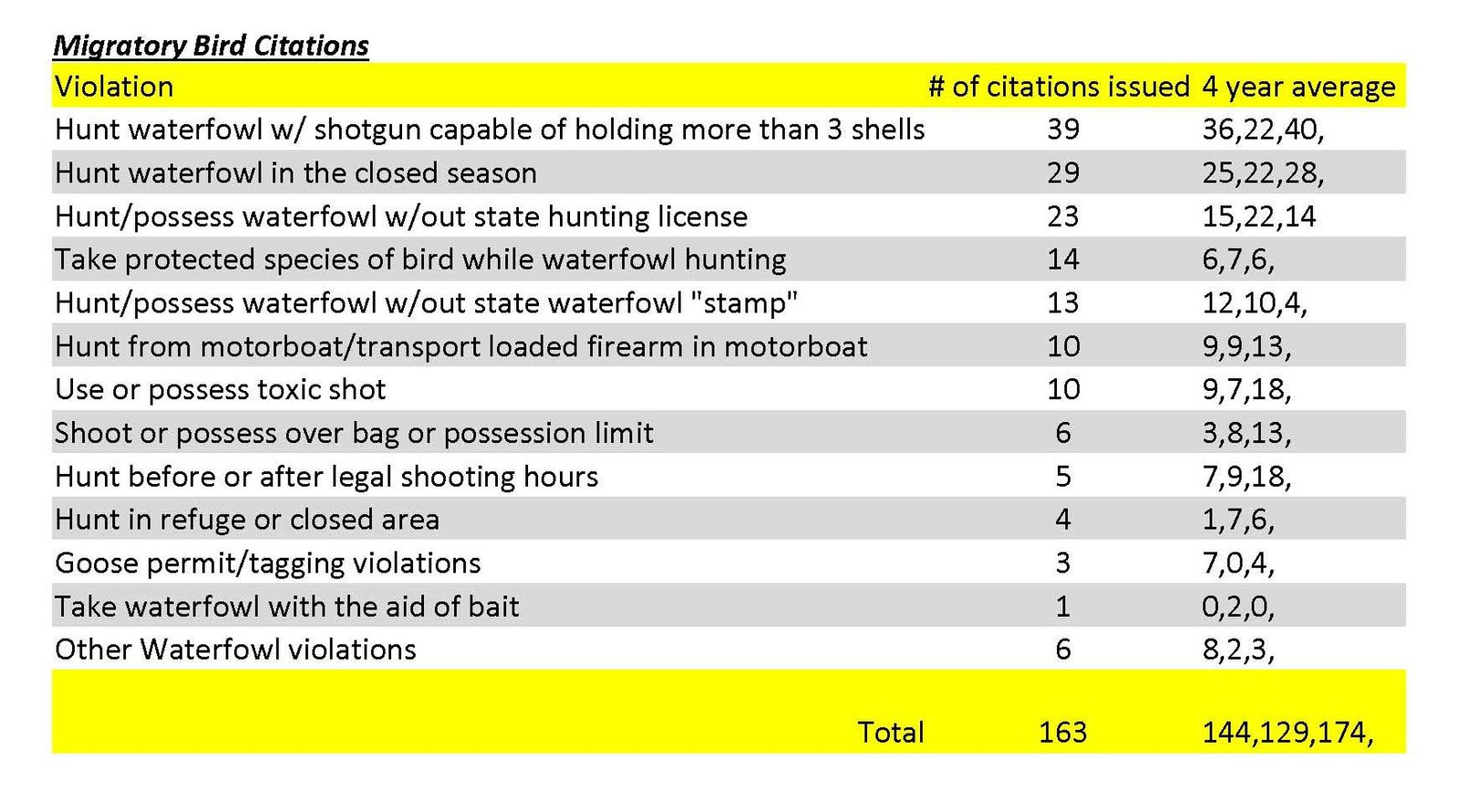By Bruce Urben, WWA President
This article originally appeared in Wisconsin Waterfowl Association’s November, 2021 Newsletter edition.
The Wisconsin Department of Natural Resources (WDNR) has been tracking conservation violations for years. Of particular interest to waterfowlers is a breakdown of the number and types of violations followed up by our warden force for Migratory Bird Enforcement.
First, thank you to Taylor Finger, WDNR Migratory Game Bird Specialist and Tyler Strelow, WDNR Conservation Warden Supervisor for the following statistics for the 2021 Migratory Bird Law enforcement this far in the season.
The chart below, highlighted in green, is the breakdown of WDNR’s migratory bird calls for Law Enforcement to date. As you can see, hunting during a closed season is the leading violation this year. Many of these violations include hunting species closed during the early teal season. WDNR indicates that this violation stays pretty consistent at about 22-29 per year. Shooting hours violations run a close second followed by hunting by illegal means. A total of 338 violations were noted to date.

The second chart, below and highlighted in yellow, is a current list of specific violations each followed by the previous three years average.

In reviewing this chart, it becomes concerning to see some of the violations increasing over time. Hunting waterfowl in a closed season, hunting without a license or stamp and taking a protected species seem to be increasing from the 4-year average. Some of this may be due to the increased participation in waterfowl hunting during the pandemic, but it does highlight the need for us as waterfowlers to do a better job in heeding the law.
Identification of target species during the early teal season can be challenging for even the seasoned waterfowling veteran. Mallards and wood ducks are particularly vulnerable during the early season because of their eclipse plumage (uncolored due to recent molt). Care must be taken to properly ID your target and if there is doubt… don’t shoot!
Usually, mallards and wood ducks will become fully plumed by mid to late October, but many late molters may still be in their drab eclipse plumage.
As waterfowlers we have the responsibility to become familiar with waterfowl identification which should include more clues than just observed color. We need to be proficient in various species flight patterns, their bill color or even their silhouetted form while flying or on the water. There are many ways for you to become familiar with these on the internet or through attending seminars. These clues will go a long way in helping you to avoid harvesting a protected species or accidental over-bagging.
So, what do you do if you do accidentally harvest a protected species or over-bag? Call your local conservation warden and report it! They will appreciate your concern for the resource and in many instances may result in a warning rather than a citation.
We all need to be diligent in complying with our conservation laws. These laws were placed there to properly manage the resource for generations to come. Remember, hunters were our first conservationists.
